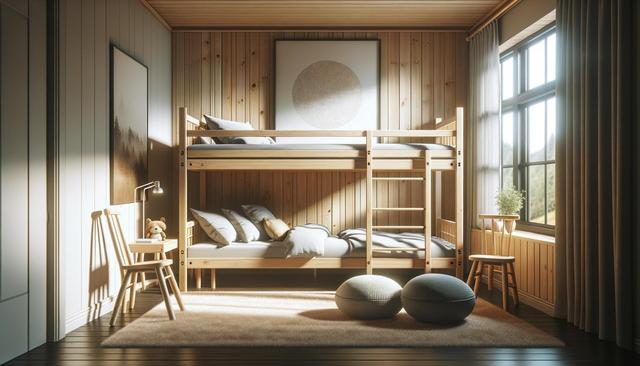Understanding the Importance of the Right Kids Beds
When it comes to furnishing a child’s bedroom, selecting the right kids beds is one of the most important decisions parents face. A bed is more than just a place to sleep—it’s a space for rest, imagination, and growth. The right choice can support healthy sleep habits and provide a comforting sense of personal space, especially during early development years.
Kids beds come in various forms, from single beds to themed designs, and choosing one depends on your child’s age, room size, and functional needs. Safety is always a primary consideration, so it’s essential to ensure that the frame is sturdy, the mattress fits properly, and there are no sharp edges or loose parts. Many parents also consider the longevity of the bed—opting for adaptable designs that grow with the child can be a smart investment.
It’s helpful to involve children in the selection process. Their input can make them feel more connected to their room and excited about bedtime. Whether it’s a favorite color, a playful feature, or added storage, these small details can make a significant difference in how a child views their sleeping space.
Why Bunk Beds Are a Practical Solution
Bunk beds offer a practical and space-saving solution, particularly in shared bedrooms or smaller homes. These beds stack two sleeping areas vertically, allowing more floor space for play or other furniture. For siblings sharing a room, bunk beds can also foster a sense of companionship and fun.
They are especially useful in the following situations:
- Rooms with limited floor space
- Shared bedrooms for siblings or guests
- Families looking to maximize functionality
Modern bunk beds often come with added features such as built-in desks, drawers, or shelves, making them multifunctional pieces of furniture. However, safety should remain a top priority. Always check for guardrails on the top bunk, a stable ladder, and an appropriate age recommendation—most experts suggest that kids under six should not sleep on the top bunk.
Aside from functionality, bunk beds can also be a source of excitement. Many kids enjoy the novelty of climbing up to sleep or having their own territory within a shared space. With the right setup, bunk beds can turn a regular bedroom into a fun and efficient environment.
Design Considerations for Kids Beds
Design plays a critical role in selecting kids beds, as it affects both aesthetics and functionality. A well-designed bed can complement the room’s decor while offering built-in features that help keep things tidy and organized. Parents often look for styles that can adapt to changing tastes as children grow older.
Consider these design aspects:
- Neutral colors or themes that age well
- Storage solutions like underbed drawers or headboard shelves
- Materials that are durable and easy to clean
Additionally, themed beds—such as those shaped like cars, castles, or tents—can spark creativity and make bedtime more appealing. While these are typically more suitable for younger children, they can play a role in easing transitions, like moving from a crib to a bed.
For those who prefer a minimalist approach, there are many sleek and simple models that focus on comfort and practicality. These designs are often easier to match with evolving room themes and can be a more long-term choice.
Safety and Maintenance Tips
Keeping kids beds in safe condition requires regular maintenance and awareness of safety standards. No matter the type—whether it’s a single bed or bunk beds—routine checks and proper setup are essential for ensuring a secure sleeping environment.
Here are a few maintenance and safety tips:
- Check bolts and screws regularly to ensure they’re tight
- Inspect for any signs of wear or damage
- Use mattresses that fit correctly and meet safety guidelines
- Teach children how to use ladders or stairs on bunk beds safely
Additionally, it’s wise to place beds away from windows, heaters, or hanging cords. For bunk beds, installing a nightlight can help children navigate safely during the night. Also, consider the ceiling height to prevent bumps when sitting up on the top bunk.
By maintaining a watchful eye and teaching kids the importance of being cautious, parents can extend the life of the bed and ensure a safe sleeping space for years to come.
Making the Most of Limited Space
In many homes, optimizing space can be a challenge—especially in children’s rooms that double as play areas, study spaces, and storage zones. Both kids beds and bunk beds can be strategically chosen to enhance room functionality without compromising comfort.
Here are some ideas to get more from your space:
- Choose beds with built-in storage compartments
- Use vertical space creatively with shelves or wall hooks
- Opt for convertible bunk beds that can separate into two beds
- Look for modular furniture pieces that serve multiple functions
When arranged thoughtfully, even small rooms can feel spacious and welcoming. It’s often about finding the right balance between furniture size, layout, and the activities that take place in the room. Beds with trundle options or fold-down desks can further enhance space efficiency.
Ultimately, the goal is to create a room where your child feels comfortable and free to rest, play, and grow. With the right planning and furniture choices, even the smallest spaces can become warm and functional environments.
Conclusion: Building a Comfortable and Functional Sleep Space
Choosing the right kids beds and bunk beds is about more than just furniture—it’s about creating a space that supports your child’s well-being and development. From safety to design and space-saving options, the choices you make can have a long-lasting impact on their comfort and daily routine.
Whether you’re furnishing a shared room or designing a cozy nook for one, keeping your child’s needs, preferences, and safety in mind will help guide the process. With thoughtful planning and quality furniture, you can create a room your child will enjoy spending time in every day.








